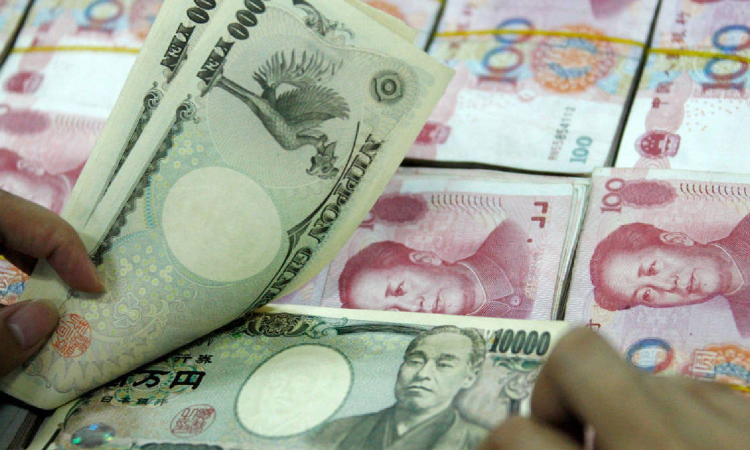Strategic Resilience: How Asia can reduce its dollar dependence
Despite heightened geopolitical tensions and escalating trade wars, the US dollar’s global dominance is unlikely to fade in the near term. This leaves Asian economies vulnerable to dollar shocks, underscoring the need for deeper regional cooperation and stronger financial safety nets

WASHINGTON: The US dollar remains the world’s leading reserve currency, but recent developments – particularly President Donald Trump’s unilateral economic diplomacy, including weaponisation of the dollar – have fuelled doubts about whether it will maintain that status. While some of America’s geopolitical rivals may hope to displace the dollar, the real challenge facing Asian economies is to manage the vulnerabilities created by their heavy dependence on it.
To be sure, no other currency currently rivals the dollar’s credibility and global reach. While geopolitical tensions and the risk of sanctions have fuelled diversification efforts, the greenback’s international dominance is unlikely to diminish in the near term.
That is not necessarily good news for ASEAN+3 countries, because their longstanding reliance on the dollar makes them acutely exposed to US monetary-policy shifts and global financial shocks. Asian policymakers must therefore focus on bolstering financial resilience through deeper regional cooperation – not necessarily a euro-style monetary union, but rather pragmatic measures aimed at reducing risks and enhancing strategic autonomy.
For decades, the dollar has underpinned Asia’s trade and financial flows, reflecting both supply-chain linkages and the greenback’s status as a safe haven. In South Korea and Thailand, for example, more than 70% of trade with China and ASEAN countries is invoiced in dollars. For emerging economies in particular, dollar assets offer unmatched liquidity and reliability, even as they create structural vulnerabilities.
Those vulnerabilities, though, can be severe. US monetary tightening often triggers capital outflows and sharp currency depreciation, leaving borrowers who earn in local currencies and borrow in dollars with higher debt burdens. This currency mismatch was at the core of the 1997-98 Asian financial crisis, which devastated economies throughout the region, necessitating intervention by the International Monetary Fund.
ASEAN+3 policymakers today remain keenly aware that Federal Reserve rate hikes could once again destabilise their economies. To mitigate such risks, many countries in the region have amassed large foreign-exchange reserves – mostly in US Treasuries – as a form of self-insurance. These strategic stockpiles reflect both the painful lessons of past crises and the lingering “IMF stigma” that discourages reliance on external bailouts.
The idea of an Asian common currency, which briefly gained traction after the 1997 crisis, has since faded, as the continent’s diverse political systems, economies, and cultures make such an undertaking unfeasible. Instead, attention has shifted to more pragmatic, incremental initiatives.
For starters, advances in digital technology are enabling faster, cheaper cross-border settlements, driving demand for regional payment systems. ASEAN countries are currently piloting QR-code-based cross-border payment systems, while several central banks in East Asia are exploring distributed ledger platforms for multi-currency transactions.
But these efforts should not remain fragmented pilots. ASEAN+3 economies must work together to scale up and integrate payment systems, thereby reducing transaction costs and exchange-rate risks in intra-regional trade and tourism.
Another challenge is to reinforce regional financial safety nets. With a lending capacity of $240 billion, the Chiang Mai Initiative Multilateralization provides liquidity to ASEAN+3 economies facing balance-of-payments crises. Building on the work of the ASEAN+3 Macroeconomic Research Office (AMRO), member economies hope to strengthen the CMIM by introducing a Rapid Financing Facility and are considering paid-in capital contributions. Such reforms would make the CMIM more flexible and credible, enabling it to respond more effectively to sudden dollar-related shocks.
Strengthening resilience through regional financial cooperation offers Asian economies a far better path than direct confrontation with the dollar. To guard against dollar-related shocks, they must build on existing ASEAN+3 initiatives in three core policy areas.
First, expanding local-currency settlement in trade and investment, especially through bilateral and regional currency swap arrangements, could help reduce vulnerabilities. Such frameworks – already operational between countries such as Indonesia, Malaysia, and Thailand – have proven effective in lowering transaction costs and mitigating risks.
Second, policymakers should advance the internationalisation of Asian currencies. Wider use of the yen, renminbi, and others in cross-border trade and finance could help reduce currency mismatches, even if none is positioned to replace the dollar globally.
The third priority is to standardise financial platforms and promote interoperability across payment and settlement systems. AMRO has highlighted the importance of digital financial infrastructure, including fast payment networks, which could complement regional initiatives like Project mBridge and Project Guardian. Standardisation and interoperability will be key to scaling these systems beyond the pilot stage.
Again, this is not to suggest that ASEAN+3 should follow in the European Union’s footsteps and adopt a single currency. But by elevating major Asian currencies, harmonising digital payment systems, and maintaining robust regional financial safety nets, governments can build a more resilient monetary ecosystem. These measures would complement the dollar rather than replace it, safeguarding Asia’s growth and stability amid deepening global uncertainty.
Yasuto Watanabe is Director of the ASEAN+3 Macroeconomic Research Office (AMRO). Hiro Ito is Professor of Economics at Portland State University
Project Syndicate



